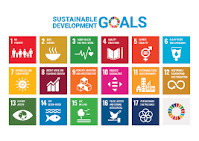CHALLENGES FACED BY PERSONS WITH DISABILITIES
Individuals with disabilities often encounter significant
challenges in accessing education and employment opportunities, leading to
disparities in educational attainment and employment rates compared to their
non-disabled peers. These challenges stem from a combination of physical,
social, and systemic barriers that hinder their full participation in society.
Challenges in Education
In educational settings, students with disabilities
frequently face physical barriers such as inaccessible buildings and
classrooms, which impede their ability to navigate the learning environment.
Additionally, there is often a lack of specialized teaching methods and
resources tailored to their specific learning needs, resulting in educational
content that may not be fully accessible or comprehensible. Socially, students
with disabilities may experience stigma and discrimination from peers and
educators, leading to feelings of isolation and reduced self-esteem.
Furthermore, there is a shortage of trained professionals equipped to support
diverse learning needs, which can affect the quality of education provided.
These factors collectively contribute to lower graduation rates and limited
access to higher education for individuals with disabilities.
Challenges in Employment
Transitioning from education to employment presents
additional hurdles. Individuals with disabilities often encounter physical
barriers in workplaces, such as inaccessible facilities and equipment, which
can limit their job performance and opportunities. There is also a lack of
workplace accommodations and assistive technologies that are essential for
enabling employees with disabilities to perform their tasks effectively.
Socially, negative stereotypes and biases about the capabilities of individuals
with disabilities can lead to discrimination during hiring processes and in
workplace interactions. Moreover, there is a scarcity of mentorship and career
development programs tailored to the needs of employees with disabilities,
which can impede their professional growth and advancement. These challenges
contribute to higher unemployment rates and lower income levels among
individuals with disabilities.
Initiatives and Programs Promoting Inclusion
To address these challenges, various initiatives and
programs have been implemented to promote inclusive education and create a more
equitable job market. In the educational sector, equity initiatives aim to
level the playing field by providing targeted support, such as mentorship
programs, career counseling, and internships tailored for underrepresented
groups. These efforts help ensure that all students, including those with
disabilities, can succeed in their chosen careers.
In the workforce, strategies to advance equity include
examining institutional structures and barriers to participation that
contribute to employment and economic disparities. This involves engaging
community partners, centering worker and business voices in shaping policies
and programs, and aligning resources to support the whole person in training
for and advancing in a career.
Additionally, the development of specialized platforms, such
as the "EmpowerAbility" portal, provides employment and scholarship
opportunities specifically for individuals with disabilities. These platforms
offer resources and support to help individuals with diverse abilities navigate
the job market and access educational opportunities.
Furthermore, the United Nations has been at the forefront of
initiating legislation that aims to deter the current toll disabilities take on
individuals in society, especially those in poverty. The Standard Rules on the
Equalization of Opportunities for Persons with Disabilities encourage states to
remove social, cultural, economic, educational, and political barriers that bar
individuals with disabilities from participating equally in society.
These initiatives and programs are crucial in fostering an
inclusive environment that supports the educational and employment aspirations
of individuals with disabilities, aiming to reduce disparities and promote
equal opportunities.
REFERENCES
·
CoreWeCan. (n.d.). How does equity education help scholars succeed
in the job market? Retrieved from https://corewecan.org/how-does-equity-education-help-scholars-succeed-in-the-job-market-2/
·
National Skills Coalition. (n.d.). Developing a more inclusive and equitable
workforce system. Retrieved from https://nationalskillscoalition.org/resource/video/developing-a-more-inclusive-and-equitable-workforce-system/
·
Wikipedia Contributors. (n.d.). Disability and poverty. In Wikipedia, The Free Encyclopedia.
Retrieved from https://en.wikipedia.org/wiki/Disability_and_poverty
·
The Scottish Sun. (2024, December 7). How an internship for young people with
learning disabilities can help build skills and independence.
Retrieved from https://www.thescottishsun.co.uk/money/13563865/internship-learning-disabilities-skills-independence/
·
Time. (2024, December 6). Disabled workers deserve more than subminimum
wage. Retrieved from https://time.com/7171382/disabled-americans-section-14c-subminimum-wage/

Comments
Post a Comment